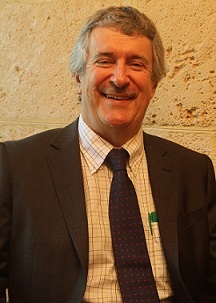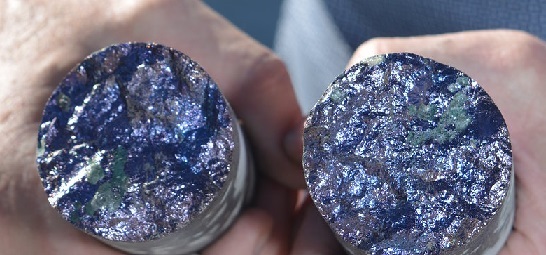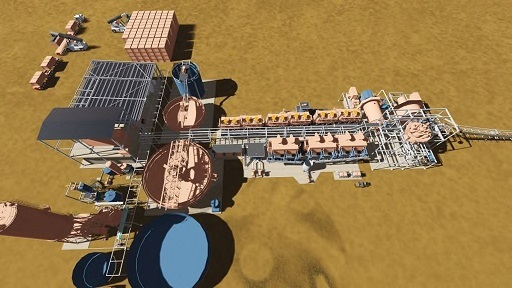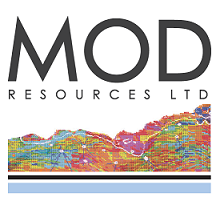Having sped out of the blocks after getting a ministerial green light to explore a massive area around its T1 (Mahumo) resource only last February, MOD is shifting gear again as it mounts a comprehensive, systematic search for new copper deposits in the circa-1,000sq.km area under tenure in what is now known as the T3 Dome on the Kalahari Copper Belt.
Discounting the resource at T1 (2.7 million tonnes grading 2% copper and 50g/t silver), the market has so far assigned an exploration-stage value of about A$60 million (US$45 million) to MOD and the 70%-owned 350,000-tonne copper and 14 million-ounce silver resource outlined to date at T3. T3, which has an indicated and inferred resource of 28.36Mt at 1.24% copper and 15.7g/t silver, is a joint venture with AIM-listed Metal Tiger plc.
The flat-lying sediment-hosted resource – which looks capable of sustaining a 2Mtpa mining and processing operation for at least nine years – has been outlined at a cost of only US$1.7 million. That’s an industry-leading 0.22c/lb for contained copper found. All up, MOD and its partner spent only US$2.5 million moving T3 from initial exploration through to scoping study delivery.

MOD managing director Julian Hanna (pictured left), an experienced industry leader but still a geologist with a passion for finding and developing new orebodies, sees no reason the comparatively untouched central and western parts of the copper belt cannot continue yielding new copper finds given the success rate elsewhere on the belt, where more than 5Mt of copper has already been identified.
“There’s been a lot of work done and over five million tonnes of copper drilled out at the eastern end of the copper belt,” he says. “There’s been virtually nothing done in the centre and at the western end.
“The 50km-long, 20km-wide T3 Dome in the centre of the belt is where most of MOD's activities are now focussed. As geologists we get the feeling that T3 is just the start and that the next 6-12 months we’re going to learn a lot more about this area.
“T3 has already captured the imagination of a lot of people in the broader copper space. The support for the A$5.4 million placement we did in December was largely institutional and this has enabled us to kick start feasibility studies and undertake a solid drilling campaign for new deposits around T3 .
“In terms of the longer term view it comes back to whether investors believe that T3 is the only thing going in this huge and structurally complex area we’re currently testing.”
While MOD is accelerating studies to advance T3 to prefeasibility (PFS) completion by mid-2017, and definitive feasibility study (DFS) delivery by March next year, Hanna says the plan is to “blitz” the T3 project area with drilling and other exploration activity this year.
Heavy rain has hampered the start, but MOD has three drill rigs working on site and a fourth likely on the way. There are 11 existing exploration targets already identified for drilling and an 11,000-sample soils programme due to start as soon as the rain stops.
The discovery of T3 in an area of long established cattle farming with no outcrop, and no previous drilling, was something of a lottery win given the number of ‘T’ targets MOD had generated on what is now a dominant 11,297sq.km package of granted licences on the copper belt.
But there is little now being left to chance.
“MOD and our 30% UK joint venture partner Metal Tiger only finalised the acquisition of the [T3] licences and got ministerial sign-off in February 2016. About three weeks later our geology manager backed a rig up to T3, which was just a small soil anomaly, and drilled the discovery hole with an intersection of 52m grading 2% copper and 32g/t silver. Ever since then MOD has been anchored to the ground at T3 for all the right reasons,” Hanna said.
“This year we’re really starting to open the book and look much, much wider around T3 with a very systematic programme.
“MOD identified four soil anomalies for drilling in the T3 area where soil sampling has been completed to date. In addition we are covering the entire 20km-wide T3 Dome with soil samples. However, we’re not only relying on there being a soil anomaly wherever there is copper. Because of varying depths of soil cover, and because of the low-angle thrusting interpreted across the dome, these deposits won’t necessarily make it to surface, therefore we may not get soil anomalies to target drilling.
“Our geological team is also drilling for several kilometres along strike from T3 … to map out the host sequence near surface, and our geological consultants are creating a 3D picture of the sub-surface geology. This requires state-of-the-art 3D IP that will be interpreted along with magnetic inversion modelling … hopefully to map out the host sequence and identify structural targets for drilling.”
Hanna said IP should generate a view to about 500m depth. “We already have an unresolved IP chargeability anomaly about 1km down-dip from T3 – at 500m depth,” he said. “We have drilled near this target, intersecting 8m at 0.7% copper, but have not yet really explained the anomaly properly. Further IP is being done to refine the target, which we plan to drill soon.”
Drilling will also target possible extensions immediately west and east of the current T3 resource, while infill drilling is underway around high-grade bornite mineralisation (example pictured below) at the western end of the proposed pit.

“I think what we’re going to see in the next few months is a rapidly evolving understanding of the geometry, structure and potential of T3 and the wider dome,” Hanna said.
“And it is complicated. It appears there may be multiple thrusting events causing a repetition of the host sequence in several places across the T3 Dome, possibly at shallow depth.
“So time will tell if this strategy is successful, but we have a very experienced team in place and the funding to find more T3s, and we’re throwing everything at it.”
The MOD/Metal Tiger JV is focussed on getting a new mine and plant at T3 operational early in 2019 (sulphide flotation plant rendering below), potentially putting it on a path to capture windfall gains from stronger copper markets and prices. The latter have strengthened in recent months to around US$2.60/lb and MOD/Metal Tiger used $2.53/lb in scoping study projections which had a US$135 million project generating about $44 million a year of pre-tax cash flow and a pre-tax IRR of 31%. The scoping study pre-tax NPV of $180 million at $2.53/lb copper (and $19.72/oz silver) moves up to $300 million, IRR 42%, and annual cash flow $65 million, with copper at $3/lb.

Stronger copper prices reduce projected capital payback from 2.6 years to less than two years.
The robust scoping study results are also built on a capex total framed using all new-equipment pricing, and seemingly high average life-of-mine head grade dilution levels for a proposed bulk openpit mining operation targeting ore zones up to 40-50m thick. External observers have noted mine optimisation work should improve feasibility study capital and operating costs, and project returns.
Site diesel power is factored in early in the project life, though a national plan to extend grid power from Maun down the copper belt to Ghanzi could alter that cost input from 2019-20.
T1, a potential underground mine about 20km from T3, looms as a second possible source of (higher-grade) ore that could also favourably impact early project returns.
“We’ve done metallurgical testwork on the two deposits and in both cases we’ve seen very high recoveries – north of 95% – for copper, and very good recoveries for silver as well,” Hanna said.
“The testwork comfortably produces concentrate grades around 40% copper, so well above the global average, with very low arsenic values. The concept MOD has discussed with the Botswana Government is to use best practice and transport concentrate in containers [for shipping]. We think this will not only improve the efficiencies of handling, blending, and stockpiling of concentrates, but also eliminate any dust issues and hopefully streamline the permitting process.
“So we’re doing everything we can to shorten the timeframe to production.
“All the key elements of the scoping study announced last October were completed to very high standards, so that’s really eaten into the PFS work the project study team is doing now.
“Geotech drilling is going on within the proposed T3 pit area, and there’s further metallurgical testwork to be conducted on the different sulphide ores. We expect to commence water bore drilling and pump testing in February near the area of the planned plant because there may be a suitable and potentially sustainable aquifer for process water right under our feet.
“Base line environmental studies, process engineering and plant design, which are key components of the PFS, are progressing in the background as well.
“MOD is already well engaged with local communities, including the Ghanzi town community and local farmers, and is strengthening relationships even further with government agencies.
“The Botswana Government is very keen to generate employment in the Ghanzi district and if T3 ticks all the boxes, and we're headed down that path, then it will be the first mine of any sort in this region.
“We’re also very fortunate in our location, [being] only 12km from the main highway, and close to a skilled labour source in Ghanzi.
“MOD already employs a well seasoned team of geologists, field technicians and support staff based in Ghanzi.”
MOD Resources – at a glance
HEAD OFFICE: First Floor, 1304 Hay Street, West Perth, WA, 6005 PH: +61 8 9322 8233 FAX: +61 8 9322 8077 EMAIL: administrator@modresources.com.au DIRECTORS: Mark Clements, Julian Hanna, Simon Lee, Steve McGhee QUOTED SHARES ON ISSUE: 1.59b MARKET CAP (at 20 Jan 2017): A$62 million MAJOR SHAREHOLDERS: Board/management (20%)
|


























